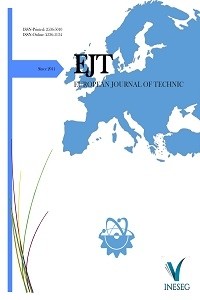Measurement of the Number of Photoelectrons per MeV for Neutron Detectors
Measurement of the Number of Photoelectrons per MeV for Neutron Detectors
Photomultiplier Tube, Single Photoelectron Liquid Scintillator, Photoelectron Yield, Neutron Detection.,
___
- ***, NEDA (GANIL): NEDA is an auxiliary detector system to be combined with gamma detector arrays. NEDA will provide detailed detection of more than one neutron at the same moment, http://pro.ganil-spiral2.eu/spiral2/instrumentation/neda
- ***, SPIRAL2: It is a new project that will accelerate the beam of radioactive ions in line with the requests of more than 700 physicists, http://pro.ganil-spiral2.eu/spiral2/what-is-spiral2/description-of-spiral2
- ***, SPES: It will be a multi-user radioactive ion beam center. Studies in interdisciplinary applied physics, material sciences and medical applications will be conducted. It is included in INFN's road map as a nuclear physics development project, http://web.infn.it/spes/
- ***, ISOLDE(CERN), http://isolde.web.cern.ch/ISOLDE/
- ***, FAIR (Darmstadt): It is established as an International Antiproton and Ionian research center. It will enable experiments around the world as an accelerator center, http://www.gsi.de/en/research/fair.htm
- ***, AGATA: Gama ışınlarının dedektör içerisinde izlenmesini sağlayan, oldukça yüksek verimlilik ve durum belirleme özelliğine sahip bir sistemdir. Türkiye dahil on iki Avrupa ülkesi tarafından finanse edilmektedir, http://www-w2k.gsi.de/agata/
- ***, EXOGAM2: This system is a fully digital gamma sequence set up in GANIL and has the ability to operate at very high counting rates, http://pro.ganil-spiral2.eu/spiral2/instrumentation/exogam2
- ***, GALILEO: It is a new 4π high resolution gamma array and consists of Cluster detectors. It will be used to examine nuclei structures in exotic radioactive ion beams produced by SPES.
- ***, PARIS: It will be used in the exemine of giant resonances that will be formed by dense neutron-rich ions coming from SPIRAL2. They are scintillation detectors with LaBr3 created to detect high energy gamma rays, http://paris.ifj.edu.pl/index.php?lng=en
- ***, Hamamatsu R11833 model Photomultiplier Tubes, https://www.hamamatsu.com/eu/en/product/type/R11833-100-03/index.html
- ***, EJ309 liquid scintillator, https://eljentechnology.com/products/liquid-scintillators/ej-301-ej-309
- Johan Nyberg, HOWTO measure the number of photoelectrons per MeV for the detectors of the Neutron Wall, https://nsg.physics.uu.se/sites/default/files/howto-nphe-v02.pdf
- ***, PMTs of NEDA — Measurement of Photoelectrons Yield and Quantum Efficiency, http://www.lnl.infn.it/~annrep/read_ar/2016/contributions/pdfs/092_C_96_C091.pdf
- ISSN: 2536-5010
- Yayın Aralığı: Yılda 2 Sayı
- Başlangıç: 2011
- Yayıncı: Hibetullah KILIÇ
While Covid-19 Outbreak Affects Economies and Societies; Exploring The Energy Demand in Turkey
Medium and Large Vector-Based SVPWM Technique for Five-Phase Two-Level Inverter
A New Joining Algorithm for Multi-hop Non-mobile Wireless Sensor Networks
Musa ÇIBUK, Davut ARI, Fikri AĞGÜN
Measurement of the Number of Photoelectrons per MeV for Neutron Detectors
Emre İREN, Ferhat ÖZOK, Mustafa Nizametin ERDURAN
Investigation of Leakage and Stability Analysis in Rock Filling Dams: The Example of Kolludere Pond
Investigation of Failure Mechanism of a DCI Engine Connecting Rod
Comparative Analysis of Lighting Elements’ Effects on Electric System
Sait DURSUN, Ümit TERZİ, Onur AKAR, Temel SÖNMEZOCAK
Mesut ŞEKER, Mehmet Siraç ÖZERDEM
Demand-Side Energy Management in Smart Buildings: A Case Study
